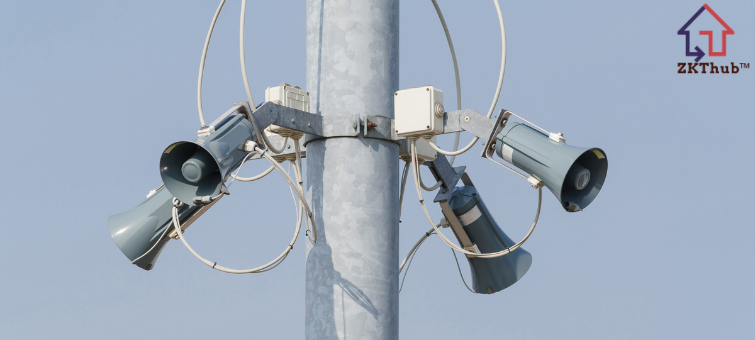Address
Shop No - 4, Near Kodathi Panchayath Office, Kodathi Village, Carmelaram Post, Ambalipura - Sarjapur Road, Bengaluru - 560035Call Us
093802 15771
Public Address System
Make your sound louder in public places
A Public Address (PA) system is a comprehensive audio setup designed to amplify sound for public announcements and communication in various settings, such as schools, auditoriums, stadiums, transportation hubs, and large public spaces. PA systems are essential for ensuring that announcements are heard clearly by large audiences, enhancing both communication and safety.
Key Components:
- Microphones: The primary input devices for a PA system, microphones capture the speaker’s voice and convert it into electrical signals. They come in various types, including handheld, lapel, and overhead microphones, each suited to different applications.
- Amplifiers: These devices boost the electrical signals from the microphones to a level that can be transmitted to speakers. Amplifiers ensure that the sound is strong enough to cover large areas without distortion.
- Speakers: Speakers output the amplified sound to the audience. They vary in size and type, including ceiling-mounted, wall-mounted, and portable speakers, and are chosen based on the acoustics of the venue and the coverage area required.
- Mixing Consoles: Also known as mixers, these control the audio signals from multiple sources, such as microphones and playback devices. They allow operators to adjust volume levels, tone, and balance to ensure clear and balanced sound.
- Audio Sources: These include devices such as CD players, computers, and audio playback systems that provide additional sound content, such as music or pre-recorded announcements.
- Cabling and Connectors: These components link microphones, amplifiers, and speakers, ensuring that audio signals are transmitted effectively throughout the system.
- Control Units: These may include remote controls or wall-mounted panels that allow operators to adjust volume levels, select audio sources, and manage the overall sound output.
Benefits:
- Enhanced Communication: PA systems ensure that announcements and instructions are heard clearly by large audiences, which is crucial for effective communication in crowded or noisy environments.
- Emergency Notifications: PA systems are vital for delivering urgent messages during emergencies, such as evacuations or safety alerts, ensuring that important information reaches everyone quickly.
- Versatility: PA systems can be adapted for various applications, from public events and concerts to daily announcements in schools or offices, making them a flexible solution for diverse communication needs.
- Improved Audio Quality: Modern PA systems provide clear, high-quality sound with minimal distortion, enhancing the overall listening experience and ensuring that messages are conveyed accurately.
- Ease of Use: With user-friendly controls and customizable settings, PA systems are designed for ease of operation, allowing users to manage audio effectively with minimal training.

What is a Public Address System?
A Public Address (PA) system is an audio system designed to amplify sound so that announcements, instructions, or music can be heard by a large audience or throughout a specific area. PA systems are commonly used in various settings, including schools, auditoriums, stadiums, airports, and other public venues.
- Crime prevention
- Industrial processes
- Traffic monitoring
- Transport safety
- Sporting events
- Monitor Employees
- Institutions
- Criminal use
- Home security
PA system amplifies sound to ensure clear and effective communication with large audiences or across expansive areas, supporting various public and organizational needs.

Details of Accessories
Accessories for a Public Address (PA) system enhance its functionality and adaptability to various environments and needs. Here are some key accessories:
- Microphones:
- Handheld Microphones: Portable and versatile, suitable for various speakers and presenters.
- Lapel Microphones: Clip-on mics that allow hands-free operation, ideal for speakers who need to move around.
- Headset Microphones: Provide hands-free operation with a more secure fit, often used in performance or presentation settings.
- Speakers:
- Ceiling-Mounted Speakers: Provide even sound distribution in enclosed spaces, such as offices or classrooms.
- Wall-Mounted Speakers: Installed on walls to cover larger areas and direct sound where needed.
- Portable Speakers: Useful for temporary setups or outdoor events, offering flexibility and ease of transport.
- Amplifiers:
- Power Amplifiers: Increase the volume of audio signals, essential for large venues or high-power applications.
- Integrated Amplifiers: Combine amplifier and mixer functions in one unit, simplifying setup and operation.
- Mixing Consoles:
- Analog Mixers: Traditional mixers that provide basic control over audio signals, including volume and tone adjustments.
- Digital Mixers: Offer advanced features like digital signal processing, remote control, and programmable settings for more complex setups.
- Cabling and Connectors:
- Microphone Cables: Connect microphones to amplifiers or mixing consoles.
- Speaker Cables: Transmit audio signals from amplifiers to speakers.
- Connectors: Include XLR connectors for microphones, TRS or TS connectors for line-level signals, and speakON connectors for speaker connections.
- Control Units:
- Remote Controls: Allow for wireless adjustment of volume, audio sources, and other settings from a distance.
- Wall-Mounted Control Panels: Provide easy access to volume and source controls in fixed locations.
- Audio Sources:
- Media Players: Such as CD players, MP3 players, or digital playback devices for providing additional audio content.
- Computers and Tablets: Used for streaming or managing audio content through software applications.
- Alarm and Notification Systems:
- Emergency Notification Panels: Trigger alerts or announcements in case of emergencies, ensuring rapid communication.
- Microphone Stands and Mounts:
- Stands: Hold microphones in place, whether for stationary use or on-stage performances.
- Mounts: Attach microphones to various surfaces or positions for optimal audio capture.
- Rack Mounts and Cases:
- Rack Mounts: Securely house amplifiers, mixing consoles, and other equipment in standard rack units.
- Cases: Protect and transport equipment safely, especially for mobile setups.
These accessories work together to optimize the performance of a PA system, ensuring clear, effective communication across a variety of settings and applications.
